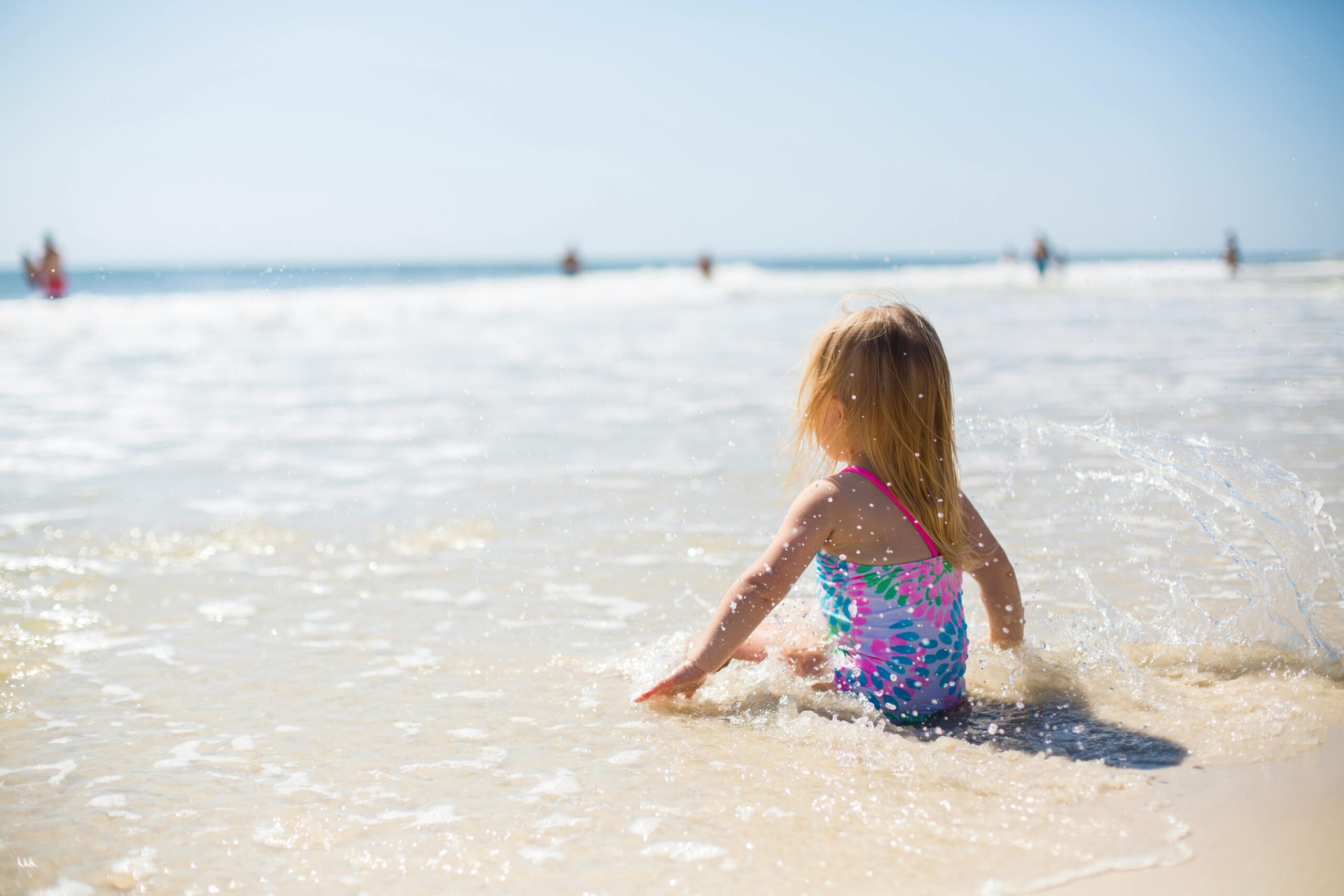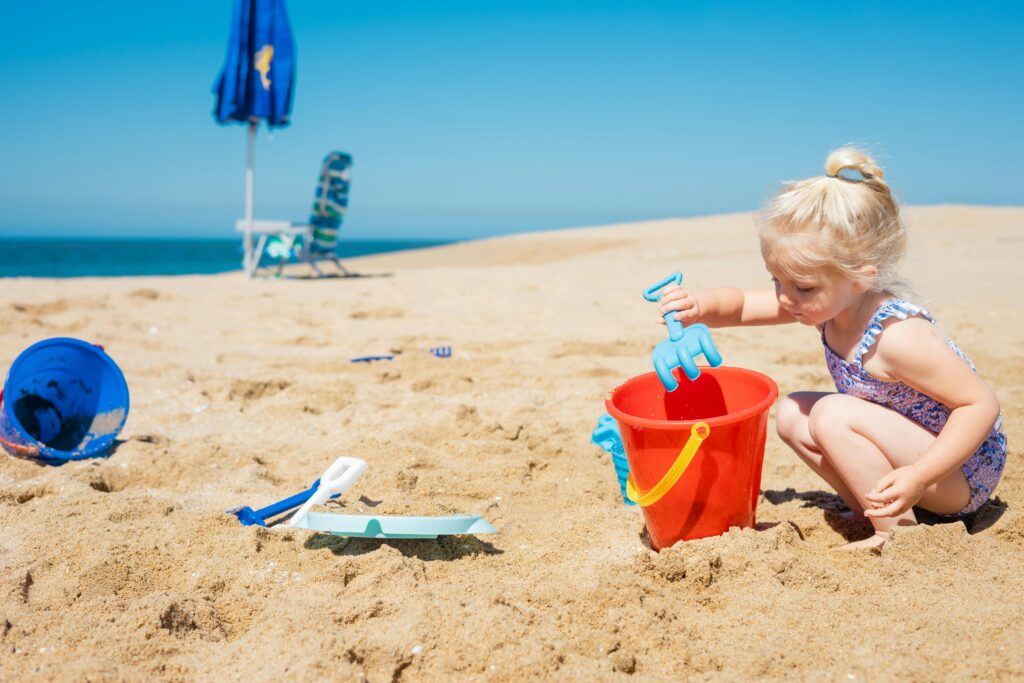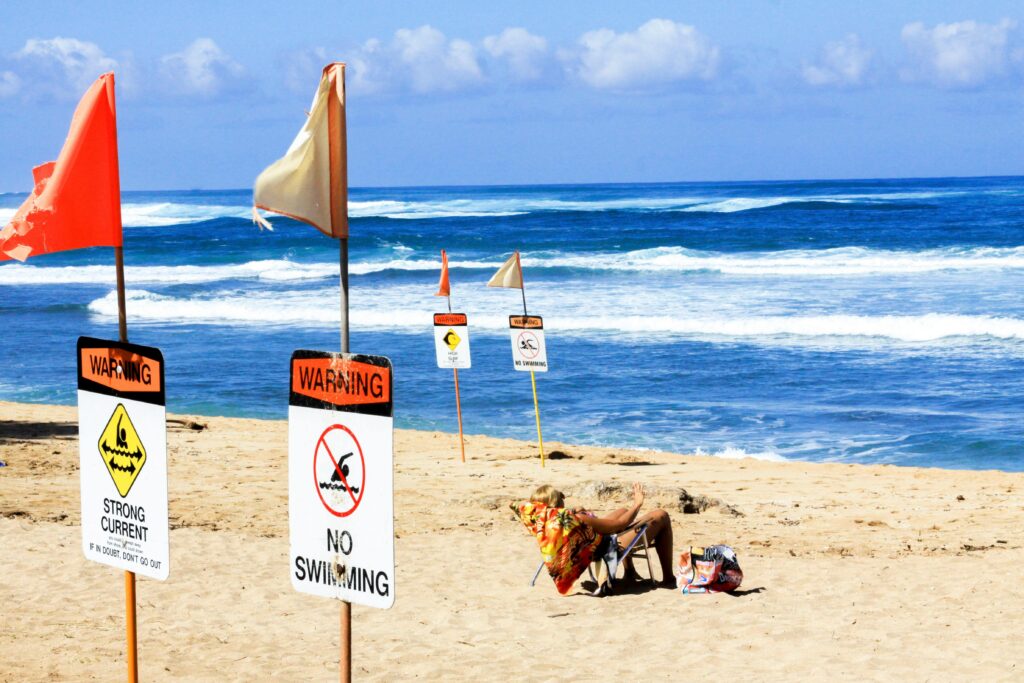Awareness
7-year-old girl dies after being buried alive in a sand hole she was digging at the beach

Beaches are a beloved destination for families seeking relaxation and fun, but beneath the sun-soaked sands can lurk unexpected dangers. For the Mattingly family, a rare vacation to Florida turned into an unimaginable tragedy when a seemingly innocent activity ended in heartbreak. The story of 7-year-old Sloan Mattingly has since captured the nation’s attention, shedding light on a hazard many don’t realize exists.
As we explore what happened that fateful day, this narrative uncovers not just the events, but also the profound impact it has had on Sloan’s family—and the important lessons it holds for anyone planning a trip to the beach.
A Family Vacation Turns Tragic
In February 2024, the Mattingly family from Indiana embarked on a rare vacation to Lauderdale-by-the-Sea, Florida—a much-anticipated break from their routine. Seven-year-old Sloan and her nine-year-old brother, Maddox, were brimming with excitement as they explored the sandy shores. Their parents, Jason and Therese, looked on, cherishing these precious family moments.
On February 20, the children engaged in a classic beach pastime: digging a hole in the sand. Unbeknownst to them, this innocent activity harbored hidden dangers. As they dug deeper, the walls of the hole became unstable. Without warning, the sand collapsed, trapping both children beneath its weight. Maddox was buried up to his chest, while Sloan was completely submerged.
Their parents sprang into action, desperately trying to rescue their children. Jason recounted the frantic moments: “It was kind of a blur… it just happened so fast. In my mind I had her in my hands, but the weight of the sand was too much.”
Beachgoers rushed to assist, and emergency services were called. Maddox was freed first, but Sloan remained trapped for over 15 minutes. Despite the valiant efforts of rescuers, she was unresponsive when finally extricated and was later pronounced dead at Broward Health Medical Center.
This heartbreaking incident underscores a peril that many beach visitors overlook: the potential for sand holes to collapse, leading to suffocation. Studies have shown that such accidents, though rare, can be fatal. A 2007 study published in the New England Journal of Medicine documented 52 cases of sand hole collapses over a 10-year period in the U.S., resulting in 31 deaths.
The tragedy of Sloan Mattingly serves as a poignant reminder of the unforeseen dangers that can arise during seemingly harmless beach activities. It calls for increased awareness and caution to prevent such devastating accidents in the future.
Remembering Sloan Mattingly
In the wake of the tragic incident, Sloan Mattingly’s family and friends have shared heartfelt memories that paint a vivid picture of a vibrant and joyful young girl. Her mother, Therese, described Sloan as “the purest human being,” emphasizing the profound impact she had on those around her.
Sloan’s father, Jason, recalled her infectious enthusiasm, noting that she would “come out in the morning and…fist-bump right out of bed.” He added, “She’d always be so happy.”
Her uncle, Chris Sloan, remembered her as a child who was “always happy” and “really fun to be around.” He reflected on her boundless energy and innocence, stating, “That’s what hurts the most in all this.”

The Hidden Danger of Sand Holes
While beaches are often seen as idyllic playgrounds, certain activities can pose unexpected risks. Digging deep holes in the sand, a seemingly harmless pastime, can lead to fatal accidents due to sudden collapses. The tragic incident involving Sloan Mattingly underscores this hidden danger.
Understanding Sand Hole Collapses
Sand, though appearing stable, can become highly unstable when disturbed. Moisture content plays a crucial role in maintaining sand’s structural integrity. When sand is dry or overly saturated, it loses cohesion, increasing the risk of collapse. Digging deep holes disturbs the natural compaction, creating voids that can collapse without warning, especially under added weight or environmental changes.
Statistics and Studies
Research highlights the severity of this hazard. A study published in the New England Journal of Medicine documented 52 incidents of sand hole collapses over a decade in the U.S., resulting in 31 deaths. Victims ranged from 3 to 21 years old, with holes typically between 2 to 12 feet deep. Activities like digging, tunneling, and jumping into holes have inadvertently triggered collapses.
Further emphasizing the danger, news reports and a 2007 medical study indicate that about three to five children die annually in the U.S. when sand holes collapse on them. These incidents often occur at beaches, parks, or even at home. Victims include a 17-year-old boy buried at a North Carolina beach and an 18-year-old who died while digging with his sister at a New Jersey beach.
Expert Insights
Stephen P. Leatherman, a coastal scientist, notes that collapses can happen suddenly, even in seemingly safe situations. He emphasizes the importance of awareness and caution during beach activities.
The tragedy of Sloan Mattingly serves as a poignant reminder of the unforeseen dangers that can arise during seemingly harmless beach activities. It calls for increased awareness and caution to prevent such devastating accidents in the future.
Staying Safe at the Beach: Essential Tips
Enjoying a day at the beach is a cherished pastime, but it’s crucial to be aware of potential hazards to ensure a safe experience. The tragic incident involving Sloan Mattingly underscores the importance of understanding and mitigating risks associated with common beach activities.
1. Limit the Depth of Sand Holes
- Keep Holes Shallow: Avoid digging holes deeper than the knees of the shortest person in your group. Deeper holes are more prone to sudden collapses, posing significant risks. Experts recommend not exceeding a depth of two feet.
2. Supervise Children Closely
- Active Monitoring: Always keep a watchful eye on children as they play, especially when they’re digging or tunneling in the sand. Immediate adult supervision can prevent accidents before they occur.
3. Fill Holes Before Leaving
- Restore the Beach Surface: Before departing, ensure all holes are completely filled in. Unfilled holes can be hazardous to other beachgoers and can destabilize surrounding sand.
4. Recognize Unstable Sand Conditions
- Assess the Environment: Be cautious of areas with dry, loose sand or spots recently disturbed by tides or construction. These conditions can lead to unexpected collapses.
5. Educate Your Group
- Spread Awareness: Discuss the dangers of deep sand holes with family and friends. Awareness is a critical step in preventing accidents.
6. Be Prepared to Act
- Emergency Response: If someone becomes trapped, call emergency services immediately. Attempt to remove sand from around the victim’s head and chest to facilitate breathing, but avoid causing further collapses.
Advocating for Beach Safety Awareness
In the aftermath of Sloan Mattingly’s tragic death, her family has become vocal advocates for increased beach safety awareness, aiming to prevent similar incidents from occurring in the future. Their personal tragedy has highlighted the need for proactive measures to educate the public about the hidden dangers associated with common beach activities.
Family’s Call to Action
Therese and Jason Mattingly, Sloan’s parents, have emphasized the importance of vigilance and education regarding beach hazards. Therese expressed her frustration, stating, “When we go to the beach, we think of water safety. And this never, ever once crossed my mind.” This sentiment underscores the necessity for broader awareness campaigns to inform beachgoers about the risks of activities like digging deep sand holes.
Community Initiatives
In response to the incident, local authorities in Lauderdale-by-the-Sea have initiated efforts to enhance beach safety. Mayor Chris Vincent announced plans for a national safety campaign targeting coastal communities, focusing on educating the public about the dangers of sand holes and promoting responsible digging practices.
Expert Recommendations
Experts advocate for the implementation of clear signage at beaches, warning against digging deep holes and outlining safe practices. Educational programs aimed at both children and adults can further disseminate crucial information. Additionally, empowering lifeguards and beach patrols to enforce safety guidelines can play a pivotal role in accident prevention.
Role of Bystanders
The Mattingly family also highlights the importance of community involvement in ensuring beach safety. Jason Mattingly urged, “If you see something that’s dangerous, take the courage and say something.” This call to action encourages individuals to be proactive in identifying and addressing potential hazards, fostering a collective responsibility for safety.

Sloan’s Story as a Lifesaving Lesson
The heartbreaking loss of 7-year-old Sloan Mattingly serves as a poignant reminder of the unforeseen dangers that can lurk beneath the surface of seemingly innocent beach activities. As her family grapples with the profound void left by her absence, they channel their grief into advocacy, striving to ensure that no other family endures a similar tragedy.
Their mission underscores a critical message: while beaches offer joy and relaxation, they also demand our respect and vigilance. By adhering to safety guidelines, educating ourselves and others, and fostering a community of awareness, we can transform our shores into safer havens for all.
As we honor Sloan’s memory, let her story inspire a collective commitment to beach safety, ensuring that future generations can enjoy the sun and sand without peril.
Typos, corrections and/or news tips? Email us at Contact@TheMindUnleashed.com
